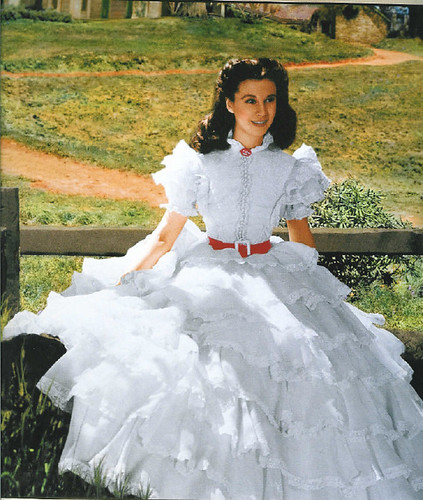From the seller:
A beautiful 1860’s two piece white muslin dress. The bodice has full pagoda style sleeves that are trimmed with a wide band of pleated organdy. The yoke is trimmed with a pleated ruffle and there is white net lace trim around the neckline. The bodice is lined with a camisole. The camisole has short puffed sleeves. The neckline on the camisole and the sleeve are trimmed with eyelet. The eyelet trim can be seen through the organdy fabric creating a very pretty effect. The bodice has a back button closure. The skirt has a pleated attached ruffle that creates an apron effect. The lower part of the skirt is decorated with three rows of pleated ruffles. The skirt is unlined. The dress is in very good and sturdy condition. It has not been cleaned. There is some age discoloration on the skirt front that can be cleaned with spot cleaning. There is one missing button and two 2 inch period mend on the back of the bodice near the button closure. Pink sash is not included. A beautiful display dress. Bust 34 Waist 24 Front skirt length 41 Back length 47 Width at hemline 132.
From Me:

Totally. (Oh yes, there are SUBSTANTIAL differences but face it, you thought it too.)



Am I alone in thinking that the skit looks like it is on BACKWARDS?
ReplyDeleteSorry, the link didn't come through properly.
Deletehttp://oldrags.tumblr.com/post/11362744978/day-dress-1865-75-us-kent-state
Another example of an apron front dress. They look odd to our eyes but they were popular in the 1860's.